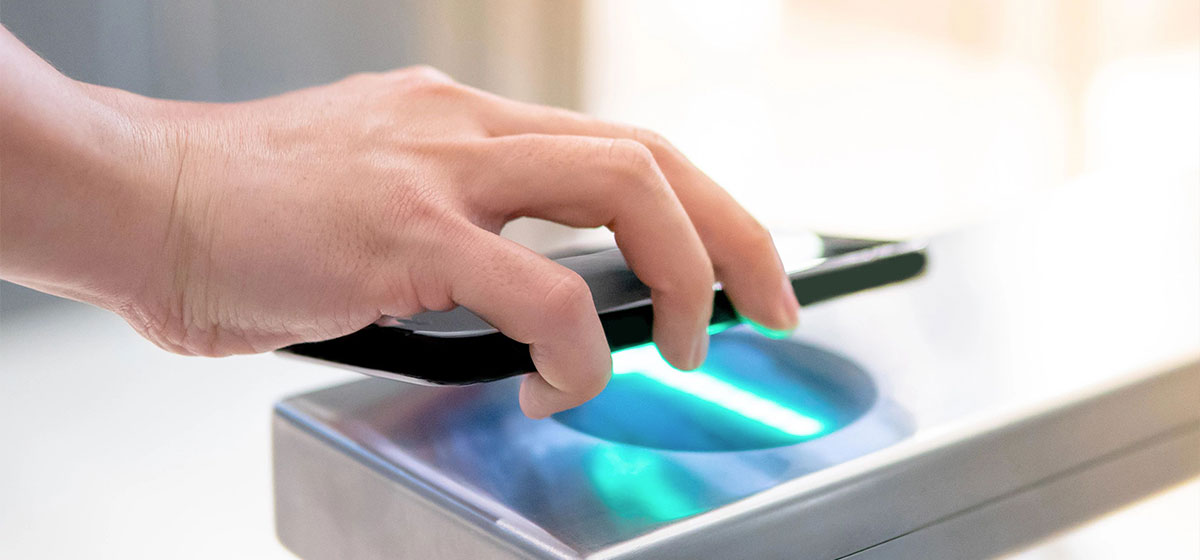New trends in access control technology
Want to benefit from the latest access control technology? Experts weigh in on the top 4 ways to improve your physical access control solution and building security.

Modernizing your physical access control can create a lot of new opportunities. Many innovative technologies are coming to the market, and some are gaining more traction than others. Keep reading for the top trends and solutions worth considering.
CHECKLIST
What’s driving the growth in access control?
According to the latest Omdia Access Control report, access control software is expected to remain the fastest-growing product segment. By 2027, the market value for access control software will surpass $774 million with a compound annual growth rate (CAGR) of 9.4%.
Our recent State of the Physical Security Report also showed that access control is the #1 technology IT and physical security teams plan to invest in for the second year in a row.
Why is access control becoming more software-centric?
There’s a shift away from the once hardware-focused world of physical access control. Building access control systems have evolved considerably, delivering more capabilities and intelligence to users. Many organizations want access to new cutting-edge features to enhance how they manage building security, corporate policies, and daily operations.
How is cloud simplifying access control modernization?
Access control as a service (ACaaS) combined with new cloud-managed appliances are making the transition to newer access control technology much easier. By evolving to the cloud organizations can keep existing architecture and hardware and only add what they need. It also minimizes overhead costs with automatic software updates and offers a predictable product release cadence.
What about the rise of cybersecurity attacks?
Legacy access control equipment wasn’t engineered to defend against the current cyber threat landscape. Outdated physical access control can lead to big vulnerabilities and data breaches. Knowing this, government bodies are enacting new laws and requiring organizations to invest in more resilient access control solutions.
How does my organization get more out of its access control investments?
Inflexible, standalone access control systems don’t always cut it. Unifying access control with different security and business systems can enhance corporate risk management and better inform operational decisions. Some organizations also want to enhance automation and improve how people move through their spaces. All of this requires greater flexibility, openness, and unification.
4 ways to improve your building’s access management with new technology
Having a robust access control system and strong policies helps keep buildings, people, and assets safe.
Organizations are deploying access control technologies to do much more than just lock and unlock doors and keep intruders out of their facilities. Find out how you can make the most of the latest access control innovations to better manage and secure your buildings.
 |
Moving access control to cloud or hybrid-cloud |
Cloud adoption is growing across all physical security applications. In our latest report, 44% of end users said that over a quarter of their physical security deployment is cloud or hybrid-cloud. And since access control applications don’t require much storage or processing on-site, moving to an ACaaS solution can be an easy transition for organizations to make.
Cloud-ready appliances are also facilitating this transition. These devices allow you to keep some existing access control hardware while migrating to a modern, feature-rich, and cybersecure access control solution. Some newer all-in-one access control hardware and software solutions also provide an almost plug-and-play deployment, packed with enterprise-grade features and innovation at your fingertips.
Moving to cloud-based access control has a lot of benefits. But one of the best perks is that all system updates are automatically pushed from the cloud. This ensures you get continuous access to the latest features and fixes, all while maintaining the highest levels of cybersecurity.
 |
Automating workflows with physical access management |
Whether you need to onboard new employees, handle temporary access requests, or even manage incoming visitors or contractors, all these tasks take time. Provisioning and deprovisioning cardholders, tracking who has access to what, assigning and removing temporary privileges, and pulling reports for audits can drain resources even more. And if mistakes happen, it can put your entire organization at risk.
This is why physical access management solutions that drive higher levels of automation are gaining traction. These tools enforce your security policies and continuously update individual access rights based on specific cardholder attributes.
They also allow users to make their temporary access and visitor requests through an easy online portal. Area approvers can then approve, change, or deny each request and review who has access to what regularly. Reporting can also be automated, providing request logs and details to complement other access control reports during audits.
All of this minimizes security gaps and helps you maintain compliance. More than that, it frees up your security and IT teams to focus on their core mandates.
BLOG
 |
Enhancing access control with mobile credentials and biometrics |
Findings from our latest industry report showed that over 45% of end users are managing over 500 cardholders. And while most still issue physical access control cards, the latest reports suggest that mobile credentials are expected to grow five times faster than smart card adoption in the coming years.

According to the IFSEC Insider The Wireless Access Control Report 2023, there are a few common reasons why organizations want to invest in mobile credentials: 1) since most people are tethered to their phones, mobile credentials can help you enhance cardholder convenience; and 2) there’s less risk of losing, sharing, and cloning credentials.
The use of biometrics such as fingerprints, iris scanning, and facial recognition is also expanding. These technologies usually support multifactor authentication applications, acting as another form of validation beyond smart cards when accessing sensitive areas. For this reason, they’re more commonly used in highly regulated industries.
Want to stay open to new technologies like mobile credentials and biometrics or others coming to market? That’s easier when you have an open architecture access control solution. As your needs evolve, a flexible access control system allows you to adapt and make changes to your tech stack.
 |
Supporting sustainability initiatives with IIoT and unification |
Environmental, social, and governance (ESG) concerns are top of mind across organizations today. Governments everywhere are focused on reducing emissions and putting pressure on businesses to do the same. To drive smart building and sustainability initiatives forward, organizations are wondering: Is there a way to reduce energy consumption and enhance building efficiencies using our physical security investments?
Choosing an open security platform that supports various IIoT plugins and integrations is the answer. This will give you the ability to connect different business systems such as heating, ventilation, and air conditioning (HVAC), elevator controls, building management systems, and various other IIoT sensors. You can then automate processes, build new applications, and collect data to support your sustainability goals.
Investing in a unified security platform can take you further. That’s because you can connect access control with video surveillance, people counting analytics, intrusion, intercom, and more. Having all this data in one platform creates a comprehensive view of what’s happening across your enterprise. It also helps you reach new business objectives such as:
- Getting a better understanding of how many people move through your offices and how they use your facilities to inform decisions about space planning or real estate.
- Creating energy-saving applications such as automating changes in lighting and HVAC temperatures when someone enters or leaves your buildings or zones.
- Digitizing response policies and tasks related to security or building issues and finding opportunities to enhance operational improvements.
Investing in smart building access control
Embracing new access control trends and solutions can help strengthen building security. It can also help you gain new operational insights, automate manual tasks, boost regulatory compliance, and strengthen sustainability initiatives.
But to do it all and do it well, you first need to set up the right foundation: a forward-thinking, open, and unified access control solution.
